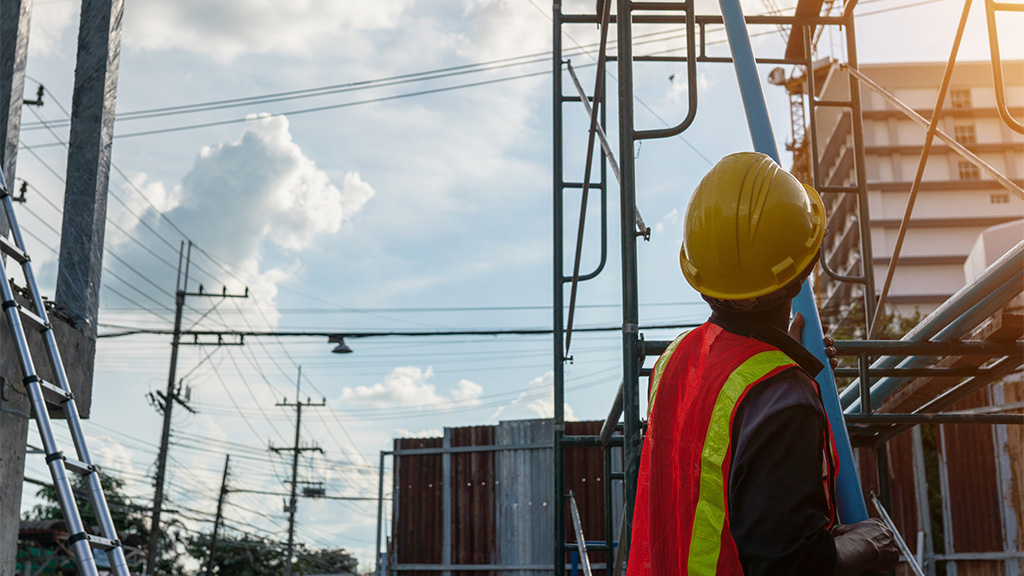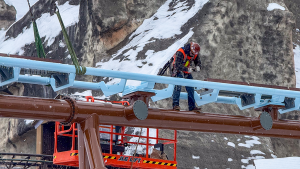“I literally felt like I just had fought for my life while stuck on that cable.”
It’s a moment one powerline technician will never forget, the moment he says he was “electrocuted” and it’s left him sharing a critical piece of advice for other workers: trust but verify.
“As an early-term apprentice at the time, you’re taught to verify everything, but as any profession, you spend a year or two working with the same crew, you have to have some trust in the people that you work with,” explained the worker, who wished to remain anonymous, opting to be called John Doe.
He spoke to the Daily Commercial News during Powerline Safety Week (May 15 to 21). The theme was Stop. Look. Live.
“You ask the right questions, ‘Is it safe to work on?’ And you get a reply, ‘yes,’” he explained. “People need to remember that does not necessarily mean that it’s safe to work on. You need to see it with your own eyes before you do any work.”
According to the Ontario Electrical Safety Report (OESR) survey, since 2019, Ontario has seen a 310 per cent increase in powerline contacts by the general public, said Patrick Falzon, powerline safety/code specialist with the Electrical Safety Authority (ESA).
There were 19 fatalities and 1,393 overhead powerline contacts occurring between 2012 and 2021.
Construction sites are the most at risk environment for contacts, where there is increased exposure to powerlines daily. One of the big misconceptions in Ontario, said Falzon, is that over 67 per cent of construction workers either do not know or believe that orange cover-ups on powerlines will protect them from shock.
Males between the age of 18 and 39 years old are at higher risk, he added.
‚Äú∫⁄¡œ≥‘πœÕ¯ a week-and-a-half ago we had a‚Ķ20-year-old worker who actually contacted a 27,000-volt powerline and died,‚Äù he said.
Doe’s incident occurred in February 2015. He was 22 years old and a third-year apprentice.
“It was a call that we had with a power service that there was a fault on the service, so we had to go in and repair it,” he recalled. “I showed up about 45 minutes to an hour after the crew had already started working on it.”
He had rubber gloves on, as he was trained to do.
“We started working on the conductor on the ground and there’s an ‘A’ side and a ‘B’ side,” said Doe. “Basically one end feeds into the transformer, the other end feeds out of the transformer and either/or could be energized, potentially both as well depending on the configuration.
“The work that we were doing, you can’t wear rubber gloves to do that work, so that’s when I asked the question ‘is it safe to work?’”
He was told it was.
“I took the rubber gloves off and proceeded to work on the cable and that’s when I got electrocuted,” he said. “You’re not supposed to use electrocution unless it results in death, but I think there is a big difference between being electrocuted and being shocked. I was definitely electrocuted.”
He was stuck on the primary conductor for about 10 or 12 seconds and the co-worker he was with got his gloves out of the truck and pried him off.
“I fell onto the ground and was just kind of lying there. I don’t even know how to describe it. I never felt that way in my life. It was beyond exhausted. I could barely move. I couldn’t really think straight.
∫⁄¡œ≥‘πœÕ¯ five minutes later the ambulance showed up.
“It was in the winter time so I vividly remember the ambulance pulling my work boots off and a plume of burnt smoke coming out of my boots,” Doe recalled.
He was transported by ambulance to a hospital in Orangeville, Ont.
“One of my family members called one of her friends, she was a trauma nurse at St. Mike’s (Hospital in Toronto) and basically she said that he needs to go to Sunnybrook immediately,” Doe recalled. “They had called an air ambulance and by the time I got to Sunnybrook I barely blinked and I was in the operating room.”
After the surgery he was told that if he got there a few hours later, they might have lost his legs.
“I had a really tough time understanding what I had actually felt and gone through. I couldn’t piece it together.”
After the surgery he was required to speak to a trauma counsellor at the hospital. He did eventually return to work but it took a year-and-a-half.
“By far the worst part of the whole process was the mental side of it,” Doe said, adding physically he took about six months to heal.
During Powerline Safety Week the ESA launched a new education module to keep construction workers safe when working around powerlines. Visit www.ESAsafe.com/construction for more information.











Recent Comments
comments for this post are closed